Two Major Innovations That Could Significantly Shape the Future Across Industries and Society
Altior Strategies
1/23/202512 min read
Introduction
In this article, we will explore the future impact of new technologies on the world and why it is crucial to comprehend and be aware of the changes they will bring. Historically, new technologies have created value for both consumers and companies. Innovations such as electricity, automobiles, and artificial intelligence have driven economic growth and societal transformation. While these advancements bring immense opportunities, recognizing them early is key to leveraging their full potential. This article will highlight two major innovations: Quantum Computing and Advanced Renewable Energy Systems.
I/ Quantum Computing
Quantum Computing is rooted in quantum mechanics, a branch of physics developed in the 20th century that studies the behavior of subatomic particles. Niels Bohr, a Danish physicist often referred to as the father of quantum mechanics, revolutionized the understanding of atomic structures with his "Bohr model" of the atom. While the history of quantum mechanics is fascinating, this section will focus on its principles to highlight the transformative potential of quantum computers.
Understanding quantum computing requires understanding these four key principles of quantum mechanics:
*Picture of Niels Bohr
- Superposition: Superposition is the state in which a quantum particle or system can represent not just one possibility, but a combination of multiple possibilities.
- Entanglement: Entanglement is the process in which multiple quantum particles become correlated more strongly than regular probability allows.
- Decoherence: Decoherence is the process in which quantum particles and systems can decay, collapse or change, converting into single states measurable by classical physics.
- Interference: Interference is the phenomenon in which entangled quantum states can interact and produce more and less likely probabilities.
Classical Computers
To understand the difference between classical and quantum computing, it’s essential to first explore how classical computers operate. Classical computers rely on binary code and bits to store information and perform calculations. Binary code consists of a combination of 0s and 1s. Imagine setting up a complex maze and asking a classical computer to find the exit. The computer would methodically test every possible combination of paths, using bits to explore new routes and keep track of dead ends. It would systematically try each potential solution one by one until it identifies the correct exit. This process can be time-consuming, especially compared to quantum computers—and here’s why.
Quantum Computers
*Image of the new Quantum Computer designed and manufactured by Google
Quantum computers use Qubits which are created by manipulating quantum particles, such as photons, electrons, trapped ions and atoms. To manipulate such particles, qubits must be kept extremely cold to minimize noise and prevent them from providing inaccurate results or errors resulting from unintended decoherence. There are many different types of qubits used in quantum computing today, with some better suited for different types of tasks.
A few of the more common types of qubits in use are as follows:
-Superconducting qubits: Made from superconducting materials operating at extremely low temperatures, these qubits are favored for their speed in performing computations and fine-tuned control.
-Trapped ion qubits: Trapped ion particles can also be used as qubits and are noted for long coherence times and high-fidelity measurements.
-Quantum dots: Quantum dots are small semiconductors that capture a single electron and use it as a qubit, offering promising potential for scalability and compatibility with existing semiconductor technology.
-Photons: Photons are individual light particles used to send quantum information across long distances through optical fiber cables and are currently being used in quantum communication and quantum cryptography.
-Neutral atoms: Commonly occurring neutral atoms charged with lasers are well suited for scaling and performing operations.
If we take the example of the complex maze than we could say that quantum computers would take a “bird eye view” of the problem and solve it way faster than classical computers. Qubits don’t test multiple paths at once, it will measure the probability amplitudes of qubits to determine an outcome.
Main differences between Quantum and Classical Computing
Classical computing is used by everyday devices and multipurpose computers. It stores information in bits with only two possible states, 0 or 1, and processes data sequentially and logically. Quantum computing, on the other hand, relies on specialized quantum hardware that stores information in qubits, representing 0, 1, or a superposition of both. Quantum computing processes data using quantum logic, leveraging parallelism and interference.
While quantum computing won’t replace classical computing for all tasks, traditional computers are still best for most general-purpose tasks. However, for highly complex problems—such as simulating molecular behavior or conducting large-scale scientific research—quantum computers offer unprecedented power. Even the most advanced supercomputers, built on traditional binary technology, are limited in their ability to tackle these intricate calculations. Quantum computing excels in handling these complex problems by speeding up data processing and offering solutions where classical computers fall short.
Industries where Quantum Computing could make an immense leap forward:
Pharmaceuticals
Quantum computers have the potential to significantly accelerate drug discovery and development by simulating molecular behavior and biochemical reactions. This could lead to faster development of life-saving treatments and medical solutions.
Chemistry
Quantum computing may offer innovative ways to address hazardous chemical byproducts. It could enhance the creation of advanced catalysts, paving the way for more sustainable alternatives to petrochemicals and effective carbon breakdown processes to mitigate climate change.
Machine learning
As AI and machine learning continue to advance, quantum algorithms show promise in processing complex datasets more efficiently. This could provide substantial speed improvements for certain machine learning tasks, reducing energy consumption and enhancing performance.
Opportunities
The global quantum computing market size was valued at USD 885.4 million in 2023 to USD 12,620.7 million by 2032, exhibiting a CAGR of 34.34% during the forecast period. The North America region dominated the market with a share of 43.86% in 2023. The quantum computing market growth is driven by advanced problem-solving, AI advancements, and global investments. With leading institutions such as IBM, Microsoft, Google and Amazon joining eager startups such as Rigetti and Ionq in investing heavily in this exciting new technology.
II/ Advanced Renewable Energy Systems
Now we are going to overview the different Renewable Energy Solutions (RES), and their potential impact on society and the industry of energy. We will look at Hydrogen integration, Solar technologies, Bioenergy and Wind power. Energy has been crucial in the development of our society and is part of our everyday lives. Without even realizing it people use energy all the time, by turning the light switch in the kitchen, when opening the faucet to have running water. That is why energy is a critical industry, and it will change the future through innovation.
Hydrogen integration
Hydrogen's potential to significantly contribute to a clean, secure, and affordable energy future is significant. Hydrogen is versatile, capable of producing, storing, and transporting energy in various forms. It can be produced from diverse sources, including renewables, nuclear, natural gas, and coal, and can be used across multiple sectors such as transport, industry, buildings, and power generation.
Despite its potential, hydrogen faces challenges, including high production costs, slow infrastructure development, and regulatory barriers. Producing hydrogen from low-carbon energy sources is currently expensive, and the development of hydrogen infrastructure is lagging, hindering widespread adoption. Additionally, existing regulations may limit the development of a clean hydrogen industry. To address these challenges, several near-term opportunities: Develop industrial ports as hubs for clean hydrogen. Transforming existing industrial ports into centers for lower-cost, lower-carbon hydrogen can leverage existing infrastructure and stimulate demand. Utilize existing gas infrastructure. Repurposing current gas pipelines to transport hydrogen can spur new clean hydrogen supplies and reduce the need for new infrastructure investments. Support transport fleets and corridors. Focusing on high-mileage vehicles, such as trucks and buses, along popular routes can make fuel-cell vehicles more competitive and encourage adoption. Initiating the first shipping routes for hydrogen can kick-start the international hydrogen trade, drawing parallels to the growth of the global LNG market. With ambitious, targeted, and near-term action, hydrogen can play a key role in global clean energy transitions. International cooperation is vital to accelerate the growth of versatile, clean hydrogen worldwide.
Solar Technologies
Solar power’s potential as a leading low-carbon energy source to meet global energy demands while mitigating climate change. We will examine the current state, challenges, technological advancements, and policy recommendations necessary to scale solar energy sustainably and cost-effectively.
Solar Energy Potential and Current Status
One advantage of solar energy is that it is among the few renewable technologies with the potential for multi-terawatt-scale deployment, which is critical for reducing greenhouse gas emissions. Recent advancements in solar technologies have resulted in declining costs, improved performance, and innovative business models, particularly in the residential sector. Despite this progress, solar energy currently accounts for only a small percentage of global electricity generation, indicating significant room for growth. Here is a graph showing how the world electricity generation is divided between different energy sources:
Technological Focus
In the solar energy industry, two technologies are ahead, Photovoltaic Systems (PV) and Concentrated Solar power (CSP). Pv systems dominates the market partially due to their maturity and scalability. They are primarily wafer-based crystalline silicon, however thin-film PV technologies are alternatives but they face resource limitations, eventually making them less viable for scale deployment. However, emerging thin-film technologies using Earth-abundant materials show promise for reduced costs and better efficiency but require substantial R&D investment. Here are a few start-ups that use this new technology:
Freschfield:
Develops building-integrated photovoltaic (BIPV) solutions, incorporating thin-film solar cells into building materials.
Swift Solar:
Focuses on lightweight, flexible solar panels using perovskite materials, which are more abundant and potentially less expensive than traditional photovoltaic materials.
Sunew:
Specializes in organic photovoltaic (OPV) technology, producing thin, flexible solar films suitable for various applications.
Swedish Algae Factory:
Utilizes nanomaterials derived from algae to enhance the efficiency of thin-film solar cells, promoting the use of sustainable and abundant resources.
These companies exemplify the industry's shift towards sustainable and cost-effective solar solutions by leveraging materials that are both abundant and environmentally friendly.
On the other hand, CSP systems provide dispatchable electricity, thanks to thermal energy storage, however they are costlier than utility-scale PV in most regions. Innovations in CSP designs, such as higher operating temperatures and advanced materials, are essential for improving competitiveness.
Major challenges
Reducing solar system costs, especially in residential sectors, requires addressing high balance-of-system expenses through streamlined permitting and interconnection. As solar penetration grows, challenges like storage needs, demand management, and grid upgrades arise, risking efficiency losses. Prioritizing technologies using abundant materials is vital for sustainable, large-scale adoption.
Policy recommendations
Policy recommendations for advancing solar energy include shifting federal incentives from investment-based subsidies, such as tax credits, to output-based subsidies that reward actual energy generation. Implementing nationwide renewable portfolio standards would unify fragmented state-level policies, enhancing efficiency. Increased funding for fundamental research and development (R&D) is crucial, particularly for emerging photovoltaic (PV) and concentrated solar power (CSP) technologies that rely on environmentally friendly and abundant materials. Additionally, supporting pilot-scale CSP projects would enable testing innovative designs and accelerate technological development.
Economic Impact
You have to keep in mind that utility-scale PV systems have become competitive in sunny regions with federal subsidies but remain less competitive in areas with lower solar radiation. Also, residential PV costs are higher due to labor, permitting, and customer acquisition costs. Increased competition and streamlined regulations could alleviate this. Although CSP systems are advantageous for energy storage, they still trail utility-scale PV in cost-effectiveness, even with subsidies.
Strategic Vision
Solar energy’s ability to grow at scale depends on overcoming cost, integration, and resource challenges. Energy storage technologies must be developed to support high solar penetration, enabling reliable and economical solar-based systems. Federal policies, including carbon pricing and refined subsidy programs, will be critical in driving solar adoption.
Opportunities
Solar energy is positioned to play a transformative role in the global energy landscape, provided technological, economic, and systemic barriers are addressed. With strategic government support and sustained innovation, solar energy could transition from a niche contributor to a cornerstone of a low-carbon energy future.
Bioenergy
First of all, to comprehend why Bioenergy could shape the future in terms of renewable energy, we have to understand how it works and the difference between two Bioenergy electricity generation. Bioenergy is derived from organic material, or biomass, which absorbs carbon from the atmosphere during photosynthesis. When this biomass is used for energy production, the carbon is released back into the atmosphere during combustion, completing a natural cycle. Modern bioenergy operates as a near-zero emissions fuel because new biomass growth absorbs an equivalent amount of carbon, balancing the emissions. Unlike traditional biomass use, which often involved inefficient and polluting methods like burning wood or agricultural waste for heating and cooking, modern bioenergy relies on advanced technologies for cleaner, more efficient energy production. As the largest source of renewable energy globally, modern bioenergy accounts for nearly 8% of renewable energy (excluding traditional biomass use) and over 3% of the global energy supply, underscoring its critical role in transitioning to a sustainable energy future.
*Global Electricity production in % (Renewable) 2023
Bioenergy's market between 2023 to 2032, an increase of 7,7% annually (Compound Annual Growth Rate):
Disclaimer
Modern bioenergy excludes the traditional use of biomass, commonly seen in developing countries and emerging economies, where open fires or basic stoves are used for cooking and heating. This traditional practice has severe negative impacts on both human health and the environment. In the Net Zero Emissions by 2050 Scenario, the traditional use of biomass is projected to be entirely eliminated by 2030 to align with the United Nations Sustainable Development Goal 7: Affordable and Clean Energy for all. However, in this market size calculation we accounted the traditional Bioenergy electricity generation that still uses questionnable practices. With that in mind, the market of only renewable Bioenergy electricity generation will likely outperform the old practices due to the new regulations and the objectives fixed by the UN.
Wind Power
As we look toward the future of energy, renewable sources are becoming increasingly vital in our quest for sustainability. Among these, wind power stands out as a leading player in the transition to cleaner energy generation. Harnessing the natural force of the wind, turbines convert kinetic energy into electricity, offering a powerful solution to reduce our reliance on fossil fuels. With advancements in technology, wind farms are becoming more efficient and capable of generating significant amounts of electricity. The expansion of wind power not only contributes to a decrease in greenhouse gas emissions but also fosters job creation and economic growth in communities around the globe. As we continue to innovate and invest in renewable technologies, the future of energy appears brighter, with wind power playing a central role in shaping a sustainable and environmentally friendly energy landscape.
As I showed you in "the global electricity production (renewable energies)" graph earlier in this article, the different sources of electricity generation , wind power accounts for over 30% of the total production, and 11% in the global electricity production (in 2023). This makes Wind power a major player in the transition to a Net Zero electricity production.
Let's quickly look at the market size growth forecast for Wind Power electricity production, from 2023 to 2030:
With a Compound Annual Growth Rate (CAGR) at 12%, the global wind market will have a strong expansion, this is mainly due to government subsidies, global investments showing through innovation.
Opportunities
Here are five notable companies involved in wind power energy generation and production:
Danish company, Vestas is a global leader in designing, manufacturing, installing, and servicing wind turbines. With a strong international presence, Vestas has installed over 160 gigawatts (GW) of wind turbines across 88 countries.
Formerly part of General Electric, GE Vernova encompasses the company's renewable energy assets, including wind power. The company reported modest profitability in its wind energy unit for Q4 2024, with the onshore wind segment experiencing its most profitable quarter in three years.
A Spanish-German company, Siemens Gamesa is a leading provider of wind power solutions, offering both onshore and offshore wind turbines. The company has a significant global footprint, with installations in over 90 countries.
Based in China, Goldwind is one of the largest wind turbine manufacturers globally. The company specializes in the research, development, and manufacturing of wind turbines and has a substantial presence in both domestic and international markets.
A Danish multinational power company, Ørsted is a global leader in offshore wind energy. The company has transformed from a traditional fossil fuel-based energy company to a renewable energy powerhouse, with a significant portfolio of offshore wind projects
These companies play pivotal roles in advancing wind power technology and expanding its adoption worldwide.


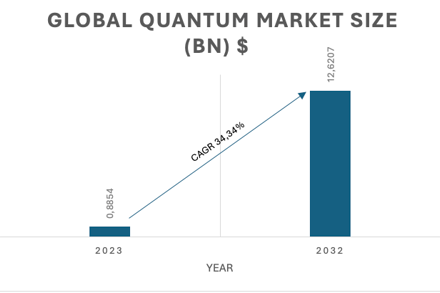

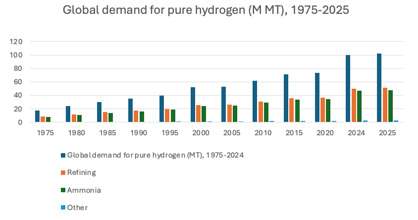

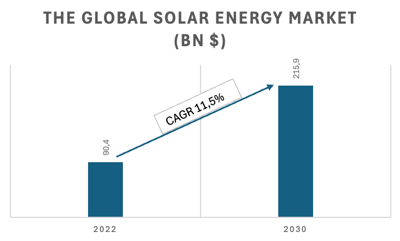

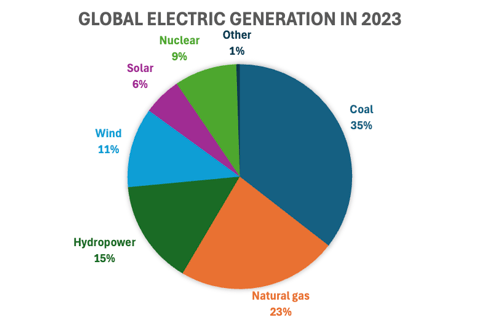

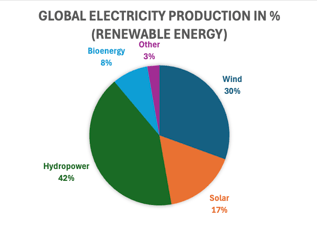

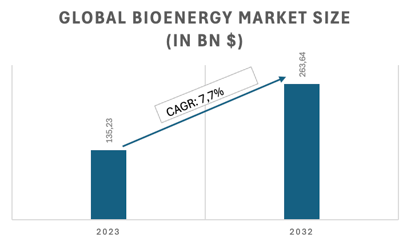



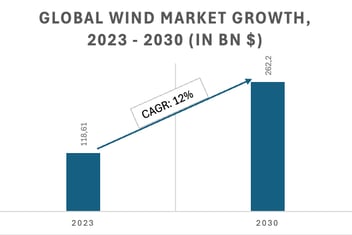

Altior Strategies
Transforming challenges into actionable business insights.
Contact
+33 6 66 38 35 21
© 2025. All rights reserved.
Subscribe to our newsletter
+961 76601068
contact@altiorstrategies.com
